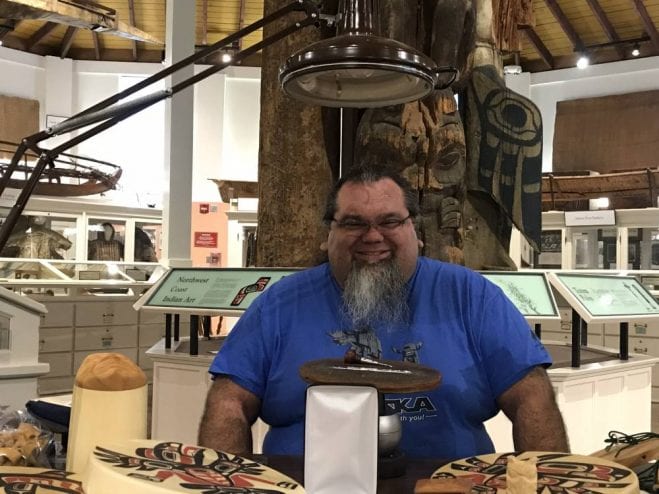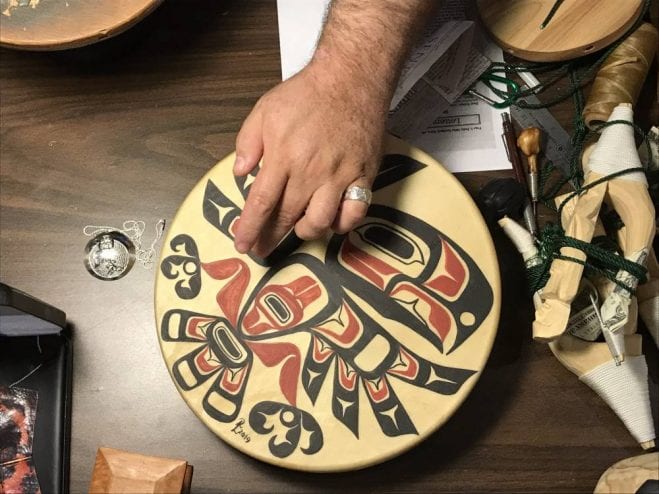
Abel Ryan is back where he started: Teaching art in the gallery of Sitka’s Sheldon Jackson Museum. The Tsimshian carver and engraver will be a familiar face to many locals. He’s been demonstrating traditional formline art and carving at the museum on and off for 16 years.
“I’ve always doodled on stuff, longer than I can remember,” Ryan said. It was something his parents always told him: they would find Ryan drawing on his schoolwork rather than doing the assignment.
His artistic practice has evolved over the years. He tries to keep a general focus on Tsimshian art. He works in wood carving, metal engraving, painting and most recently picked up drum making. “I like making messes in multimedia,” Ryan said.

At the Sheldon Jackson Museum, he sits behind a table covered in objects that reflect his multidisciplinary focus: herring bait, salmon trolling jigs, copper bracelets, bentwood boxes, and more.
As much as making the art, Ryan loves to teach. For much of the summer, he’s back where he grew into the artist he is today. Ryan studied at the Sheldon Jackson College before it shuttered in 2007. But he first learned the art of Tsimshian carving as a teenager in Metlakatla. He learned how to draw, paint, make his own carving tools, and think about creating three dimensional wood carvings before graduating high school.
Ryan refined and deepened his skills as a student at Sheldon Jackson College. That’s also when he also discovered his love for teaching others about Tsimshian art. He started thinking about teaching a beginning formline design class.

Formline is an artform common to many tribes in the Pacific Northwest that primarily focuses on three basic forms: the ovoid, a u-shape, and the s-shape, Ryan explained. “It allows us to be observers of our subjects and thinking in an observational, scientific way about what makes each of these animals special and unique visually,” he said.
When Ryan first expressed an interest in teaching, the Sheldon Jackson Museum helped him figure out how to use its space to support him. First, he set up in the galleries on Saturdays in November, which is Native American History Month. It was his first time teaching formline design and native art — and he’s been back many times since.
“I absolutely had a wonderful time and really wanted to be able to continue doing that,” Ryan said. “I love being able to share my knowledge with people, helping to bring an understanding of the art form.”

This summer, he is back as an instructor at the Sitka Fine Arts Camp and the artist-in-residence at the museum. Ryan lives in Juneau, where he teaches art during the school year and works on independent commissions. Both keep him busy.
“Very rarely a day goes by that I don’t either draw, carve, paint, or engrave,” Ryan said. “I’m always creating something, always thinking about making something”.
And much as making art, Ryan thrills in teaching others.






























